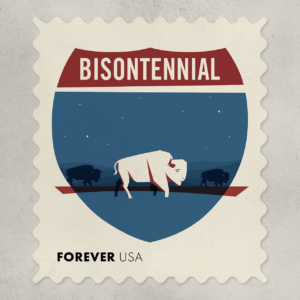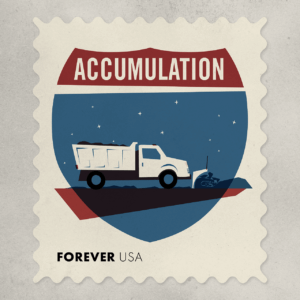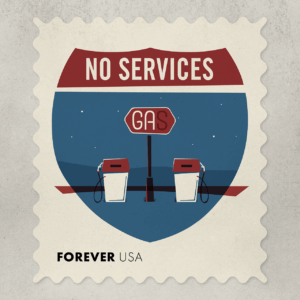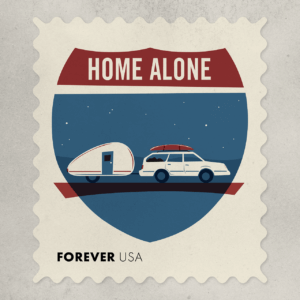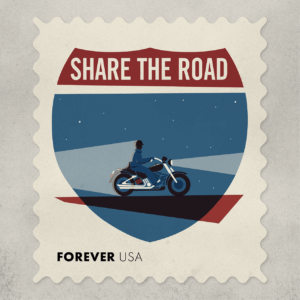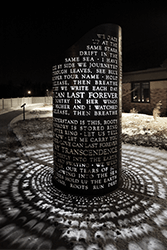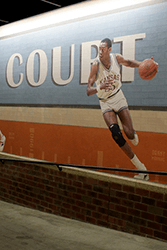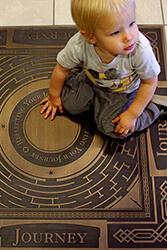South Dakota Stamp Show
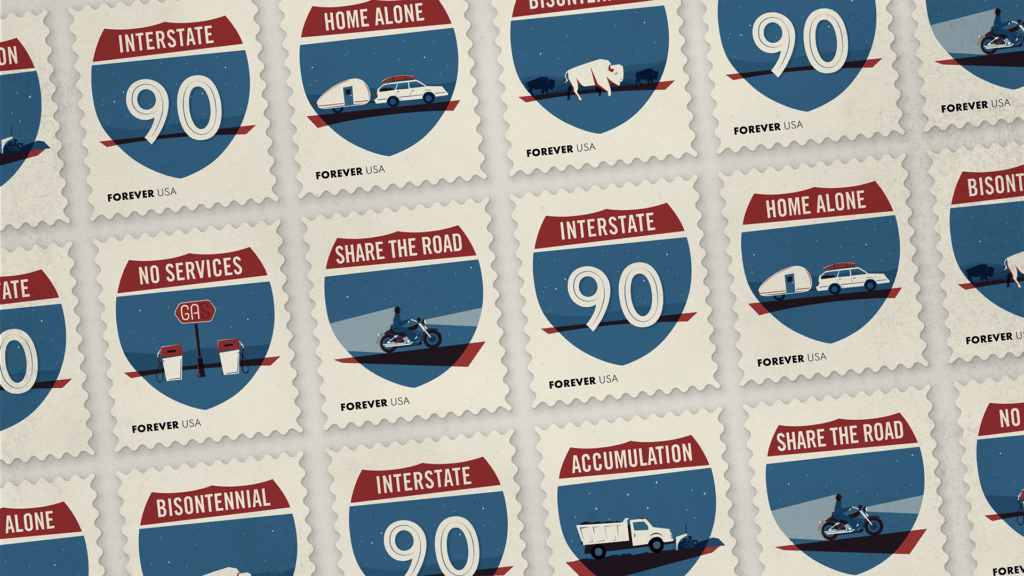
Earlier this month I had the opportunity to participate in a group show created by AIGA South Dakota—the South Dakota Stamp Show. For this show AIGA asked 13 area designers to each create a set of five concept postage stamps around a topic related to our fair state.
I chose I-90 as my topic. Interstate 90 runs through the center of the state and is the main artery of travel for most people moving through South Dakota. I-90 unifies the state, and touches on a lot of common elements of the experience of living here.
There was a lot of good work in this show, and you can still see it at the Sioux Falls Design Center for the rest of the month.
If you don’t make it down, here are the 5 stamp designs I created, with a brief explanation of each (with sources cited—my junior high English teachers would be so proud!)
Bisontennial: 200 years ago there were an estimated 75 million bison roaming the countryside. By 1895, that number was cut to 800 due to reckless and wasteful hunting. It was said, probably only with slight hyperbole, that “a person could walk on buffalo bones from Texas to North Dakota without ever touching the ground.”
Now, after 200 years, the North American bison is again thriving in commercial herds and roaming in both wild and protected places. The population is now estimated to be about 500,000.
Accumulation: In a state that averages between 30 to 70 inches of annual snowfall, snow (and snow removal) is a large feature of life. For every mile of interstate, South Dakota spends more than $2800 on winter maintenance.
Among other things, that figure includes roughly 800,000 gallons of diesel fuel and 60,000 tons of salt. (And that’s only a fraction of the nearly $22 million budgeted for snow removal in the 2017-2018 winter highway maintenance plan.)
No Services: Many early American towns grew out of settlements established where the great waterways (the Missouri River, or the Mississippi, or even the more humble Big Sioux River) met long-traveled cart trails. As the railroads came through (and especially with the 1869 start of the Transcontinental Railroad) thousands of settlements sprung up along the tracks.
Then as the automobile became more common, the presence of good roads and the people and money who traveled them became more important to a community’s thriving. And finally with the straight lines created by the 1956 Interstate Highway Act, small towns that found themselves too far off the interstate gradually lost ground to those communities that were closer. Sometimes towns bypassed by the interstate saw business come to a standstill literally overnight.
Home Alone: My first car was a 1984 Subaru GL station wagon, light blue and relatively reliable. I loved that I could throw everything I needed in the back and drive wherever I needed to go. I put Christmas lights in the back windows and installed a switch by the gear shift—I’m lucky the whole thing didn’t catch on fire.
My second car was a 1990 Subaru Legacy station wagon—no Christmas lights but just as great. I’ve never owned a kayak or a teardrop trailer, but maybe someday.
Share the Road: Of the 546 motorcycle accidents reported last year, 51% involved another motor vehicle. And I drew a helmet on this guy because in 245 (or 55%) of last year’s accidents the riders weren’t wearing helmets.
Of the 546 motorcycle accidents reported last year, 51% involved another motor vehicle. And I drew a helmet on this guy because in 245 (or 55%) of last year’s accidents the riders weren’t wearing helmets.
To read more articles like this visit: Uncategorized

